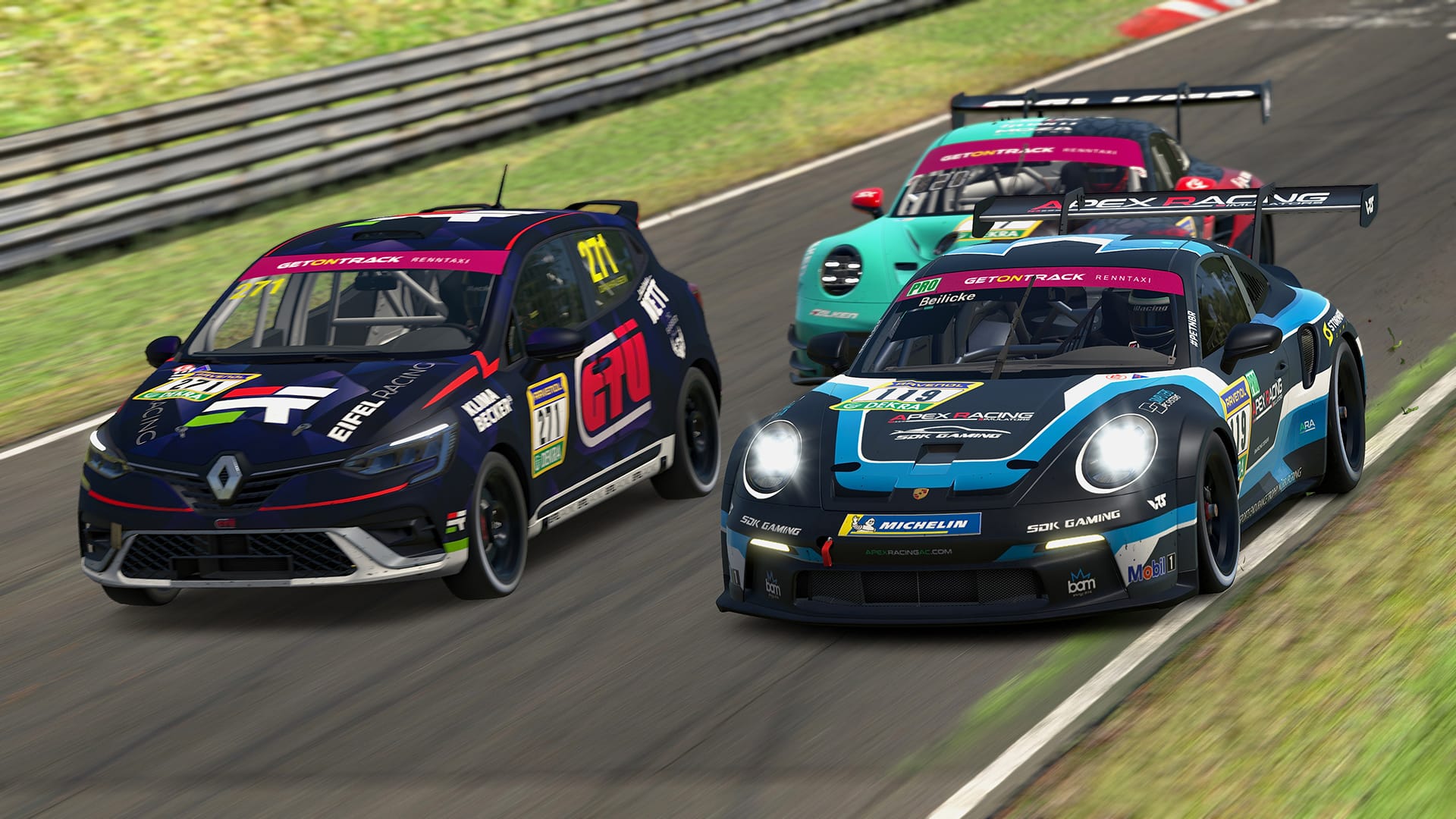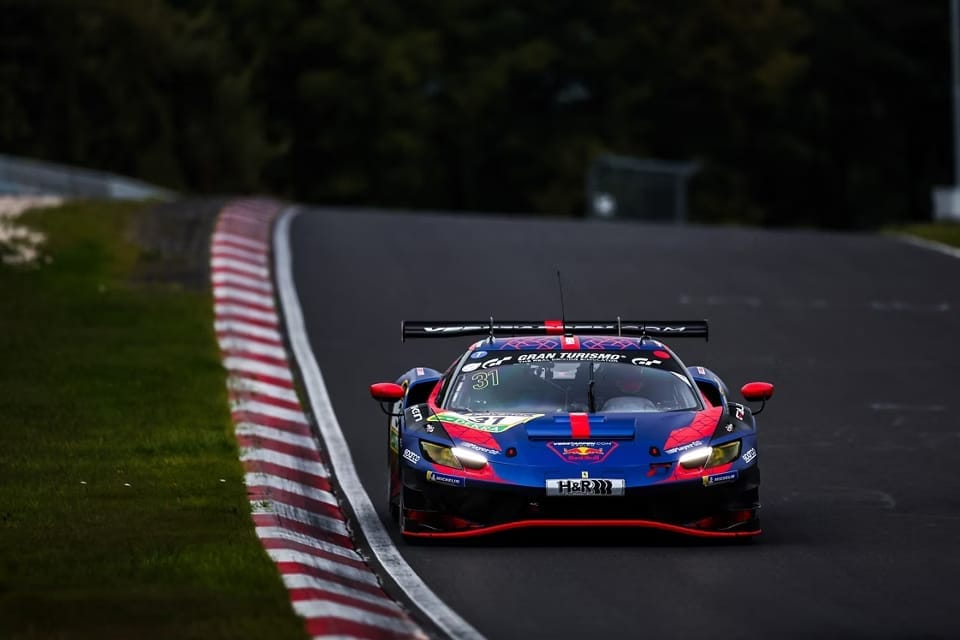Max Verstappen’s shock GT3 debut (and victory) at the Nürburgring didn’t just win headlines earlier this year. It helped trigger the biggest rewrite of the Nordschleife’s licensing system in a decade.
Back at the start of his career, Verstappen prompted Formula 1 to change the rule regarding drivers’ minimum age - the bar being raised to 18 after he’d made his debut at 17.
Now he’s been the driving force behind a major rule change in a different championship in a rather different way.
The day everything changed
When Verstappen showed up for his first-ever race at the Nürburgring Langstrecken-Serie (NLS), few expected the four-time F1 champion to shake the foundations of German motorsport governance.
As a reminder, before taking part in an NLS race at the wheel of a GT3 car, all drivers must obtain the DMSB Nordschleife Permit Grade A. This involves theoretical classes, laps completed behind an instructor, and a race at the wheel of an underpowered car.
There are no exemptions for anyone, and Verstappen went through the process in good spirits on Friday 12 and Saturday 13 September, notably taking part in the race aboard a Porsche 718 Cayman GT4 CS with an engine restricted to 300bhp.
Two weeks later, he returned at the wheel of his Ferrari 296 GT3 and won the race with Chris Lulham, a simracer for his Red Line simracing team, who also had to secure his Permit A.
While Verstappen’s patience and passion were widely praised, this story had a major consequence for the series. Verstappen didn’t push for this reform directly, but the impact of his preparation made the case impossible to ignore.
What did the DMSB announce?
This week, the DMSB announced a historic overhaul of the Permit Nordschleife (DPN) system. For the first time ever, sim racing - specifically DNLS, the Digital Nürburgring Langstrecken-Serie - now counts toward a real-world Nordschleife permit. In short: the world’s most intimidating racetrack just acknowledged that virtual laps can be as meaningful as real ones.

“Since the introduction of the DNLS in 2020, we've known that simracing is not just a fun pastime, but accurately reflects reality in a more than adequate form,” said VLN sporting director Christian Vormann, who last year, alongside his role as race director in the real NLS, also oversaw the DNLS races.
“Furthermore, Max Verstappen’s recent participation in an NLS race has shown how important virtual preparation is, especially on the notorious Nordschleife.”“Without a doubt, as a four-time Formula 1 world champion, he is an exceptionally skilled driver,” he added. “Nevertheless, the fact that he could win his first GT3 race outright surprised many.
“Verstappen completed countless laps in the ‘Green Hell’ in the iRacing simulation, including in the DNLS. He adapted extremely quickly.
“The DMSB deserves great praise for this bold step in recognising virtual racing as proof for the DPN, and we are proud to offer the DNLS as the first platform to do so.”
It’s rare for a governing body to make such a dramatic regulatory shift, rarer still for that shift to be openly linked to one superstar’s performance. But isn't this done at the expense of safety?
“The DNLS is successful not only due to its international and highly competitive grid, but also because of its professional, reality-based overall set-up,” replied Robin Strycek, sports coordinator of DMSB e.V., who will take over as head of sports at the DMSB from January 1, 2026.
“Alongside the NLS organisation, Porsche is represented with PEETN [Porsche’s works sim programme], and stewards and officials from the real NLS and motorsport scene are actively involved.”
How it works
Under the new system, drivers holding an International D licence (Circuit) or higher can now follow a hybrid digital-to-real pathway. They can have their participation in a DNLS season - held during the winter break - counted as driving experience for the DPN Level B.
To do so, they must have completed three of the four DNLS races cleanly and classified. Additionally, participation in an RCN (Rundstrecken-Challenge) performance test is required. That’s a session where drivers must demonstrate that they have the necessary skills to drive on the circuit, often with specific criteria such as consistency, compliance with rules, and safety). And here it is sufficient to be one of two drivers. Previously, drivers had to take part in two RCN races or compete solo in a single event.
The option to progress directly from the D-License to DPN Level B through a training course, as Verstappen did this year, remains in place.
What this means for the future
The consequences could ripple across global motorsport. Simracing specialists now have a legitimate, recognised path to real GT and endurance racing. Fewer RCN races means lower entry costs, a major concern for amateurs.
But above all, this simplified system could convince some renowned drivers to take the plunge. In particular, some former F1 drivers, who have been tempted to participate in the Nürburgring 24 Hours but never took the step due to the requirements for obtaining the DMSB Nordschleife Permit Grade A.
Verstappen is expected on the grid for the 2026 edition of the Nürburgring 24 Hours on May 16-17 next year. Will he be joined on track by other superstars? Time is running out: the Season 7 opener of the DNLS is on December 6, 2025, followed by races on December 20, 2025, and February 21 and 28, 2026. The season registration is already open.



